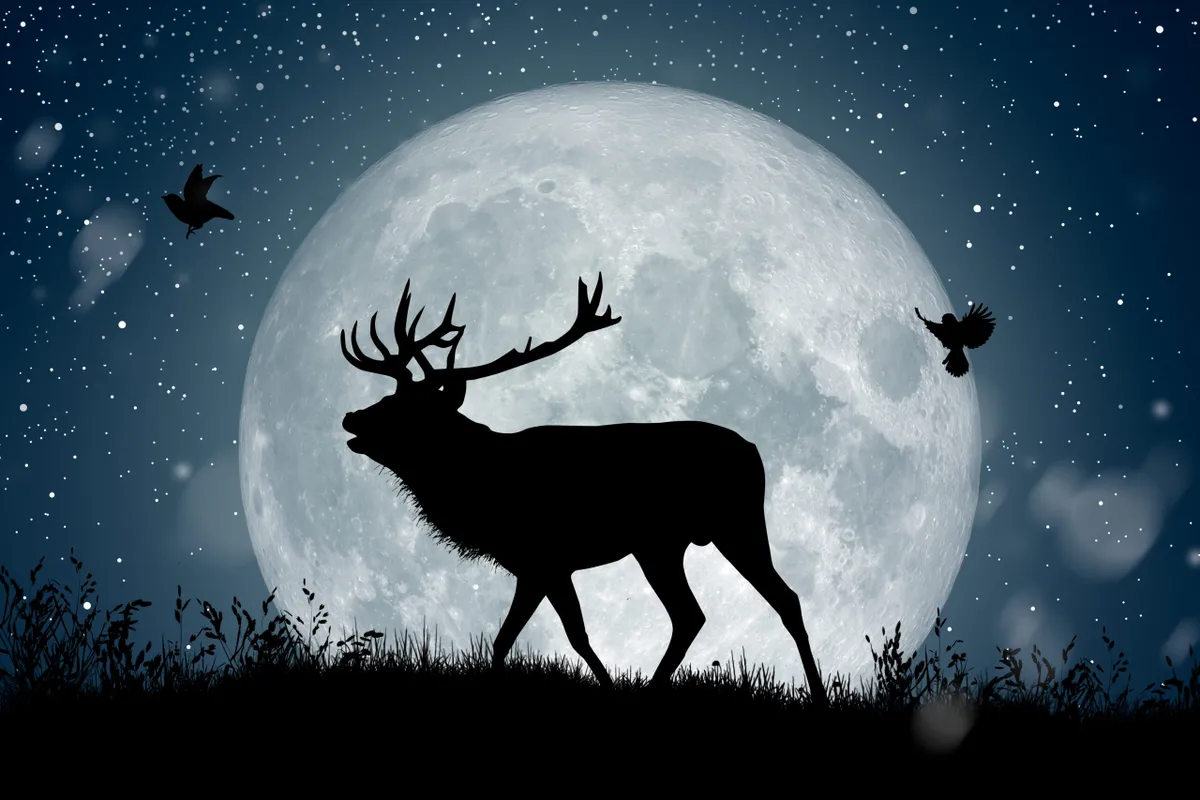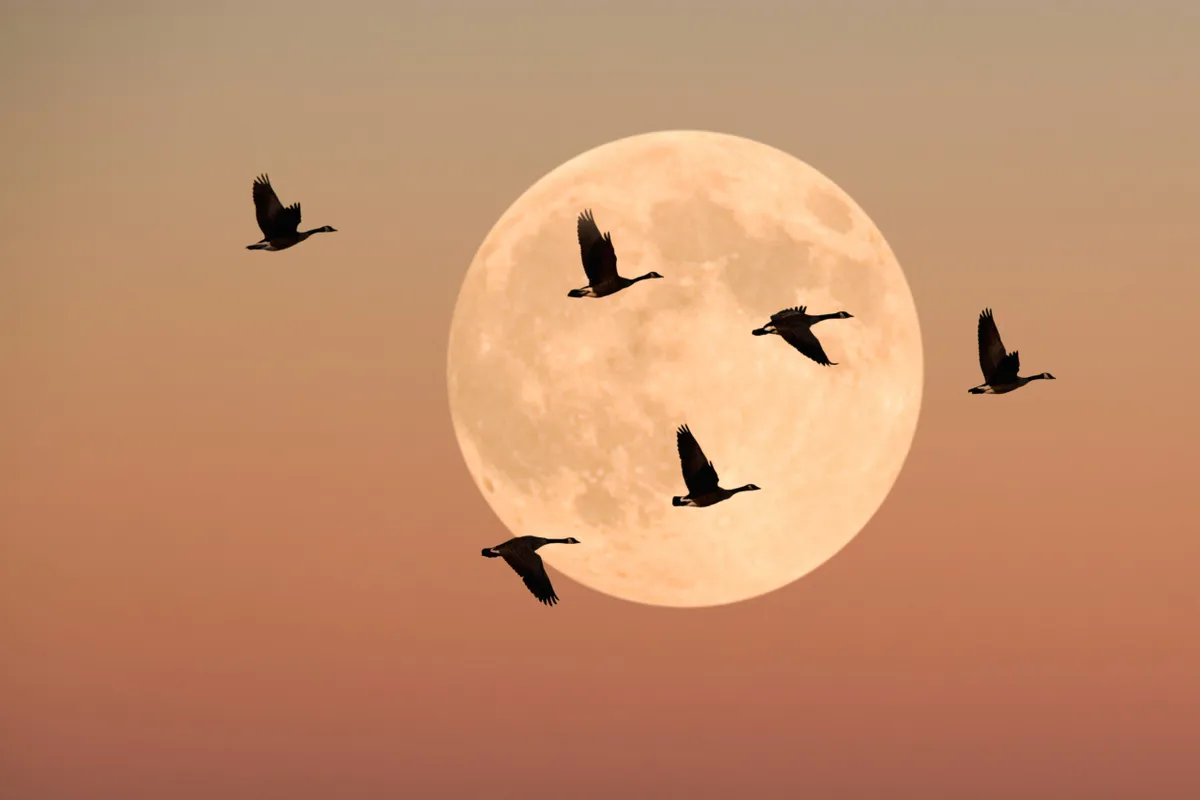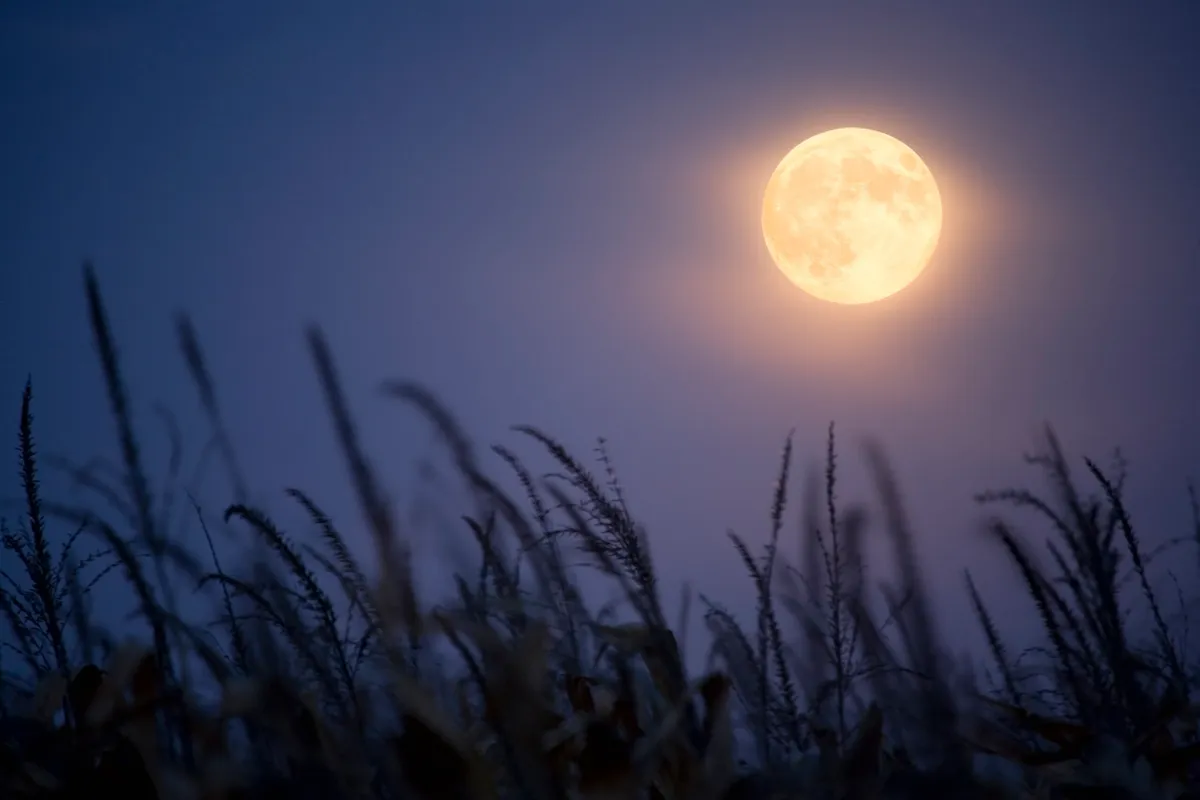The Moon orbits Earth at an average distance of 239,000 miles, yet despite this vast void it influences almost everything on our planet. Evidence of this can be seen in the way animals behave, plants grow and tides move; and in our folklore, art, literature and language.
We explore how the moon influences life on Earth.

How the Moon affects wildlife
Though relatively small in size, the Moon adds its own gravitational pull to the sun’s to create bulges in the oceans as the Earth rotates. And that’s what causes tides.
Perhaps more intriguingly, the Moon not only affects the waters of the oceans but also some of the creatures living in them. Corals, for instance, have been found to synchronise their spawning patterns with the lunar cycle. Scientists working at Arcachon in France have discovered that oysters there open their shells up much more during new moons than full moons. And baby sea turtles find their way across the beach to the sea by aiming for the moonlight sparkling on the open water.
On land, meanwhile, lions have a hard time of it around the full moon. The extra light not only makes them more visible when stealth is their trump card, it also makes their prey nervous and more likely to hide themselves away. As a result, the days immediately after a full moon are when lion attacks on humans are most likely to occur, since that’s when the cats are at their most famished.
By contrast, wolves – who are famously said to howl at the moon – are not in fact particularly affected by its phases. However, they do howl towards the Moon, albeit only because they face upwards to increase the distance their cries travel.
- 3 ways the moon affects wildlife
- 10 animals that have been to space
- What to see in the night sky this month

How the moon affects humans
Human beings, however, have enjoyed a long and fascinating relationship with Earth’s sole satellite. The Moon is one of the earliest features known to have been depicted in art and remains a popular subject for artists and musicians today.
The Ancient Greeks, Romans, Egyptians and Chinese all made her a goddess, and she has been venerated, feared or seen as a harbinger of good or ill by numerous other civilisations. For example, a Mesopotamian tablet dating from 172 BCE instructed its readers on what to do to protect themselves against the evils unleashed by a lunar eclipse. But the Moon has also been a power for good. Amulets in the form of a crescent moon were believed by Greeks and Romans to aid fertility in women.
The English word ‘lunacy’ comes from the Latin luna meaning ‘moon’ and the belief in a connection between the Moon and our mental state similarly goes back to ancient times. Greek philosopher Aristotle declared that the Moon affected the mind as it did the sea, with a full moon bringing with it a high tide in the shape of frenzied behaviour and psychological instability. However, it should be said that recent studies have discovered no link at all between the Moon and mental health.
The Moon in language
Our satellite has crept into the English language in other ways too. We talk of the lovelorn ‘mooning about’, while happier folk (particularly footballers) are ‘over the moon’. Distant events happened ‘many moons ago’, while rare events occur ‘once in a blue moon’. That last expression is a little unfortunate because blue moons are in fact relatively frequent – taking place every two to three years. This is because the Moon goes through its complete cycle in just 29.5 days (so 12 cycles take 354 days), meaning that some calendar years will contain 13 full moons. The additional full moon – either the second one in a calendar month or the extra one in a season (that is, between a solstice and an equinox) – is called a Blue Moon. Some folk like to make a wish on this moon, writing their request on a bay leaf and lighting a white candle.

How the Moon affects plants and gardening
But when it comes to the countryside, it’s in the realm of sowing and planting that the Moon has made its biggest impact. The lunar cycle has been used as a convenient and reliable calendar for millennia, so it’s unsurprising that farmers have looked to the night sky for prompts as to when to sow or plant out crops (much as we might look to Monty Don or Alys Fowler today).
The Roman natural philosopher Pliny the Elder was a strong advocate of synchronising one’s agricultural and gardening labours with the phases of the Moon. Across the Atlantic, Mayans and Native Americans were also ‘lunar gardeners’. The Celts were too. For example, they’d wait until the fifth day of the new Moon before picking mistletoe.
Gardening by the Moon is still being encouraged today. While there doesn’t seem to be much evidence that the gravitational force of the Moon is able to draw water up to the surface of the soil, as some proponents aver, it’s possible that the Moon might cause the foliage on certain plants to lift up (though it’s not known why) and that moonlight has an effect on seed germination. And we do know that the aptly-nicknamed Werewolf plant (Ephedra foeminea) times its pollen release to coincide with the full moon.

The Moon is drifting away...
But perhaps the most surprising news is that the influence of the Moon upon life on Earth is on the wane. It may seem to be adhering to exactly the same course, but the Moon is actually moving further away from us. Scientists suggest that, when it was formed billions of years ago, the Moon could have been up to 19 times closer to Earth than it is today. It’s currently deserting us at a rate of just under 4cm per year, so for someone celebrating their 80th birthday, the Moon will be orbiting 3.2m further away than when the day they were born.
